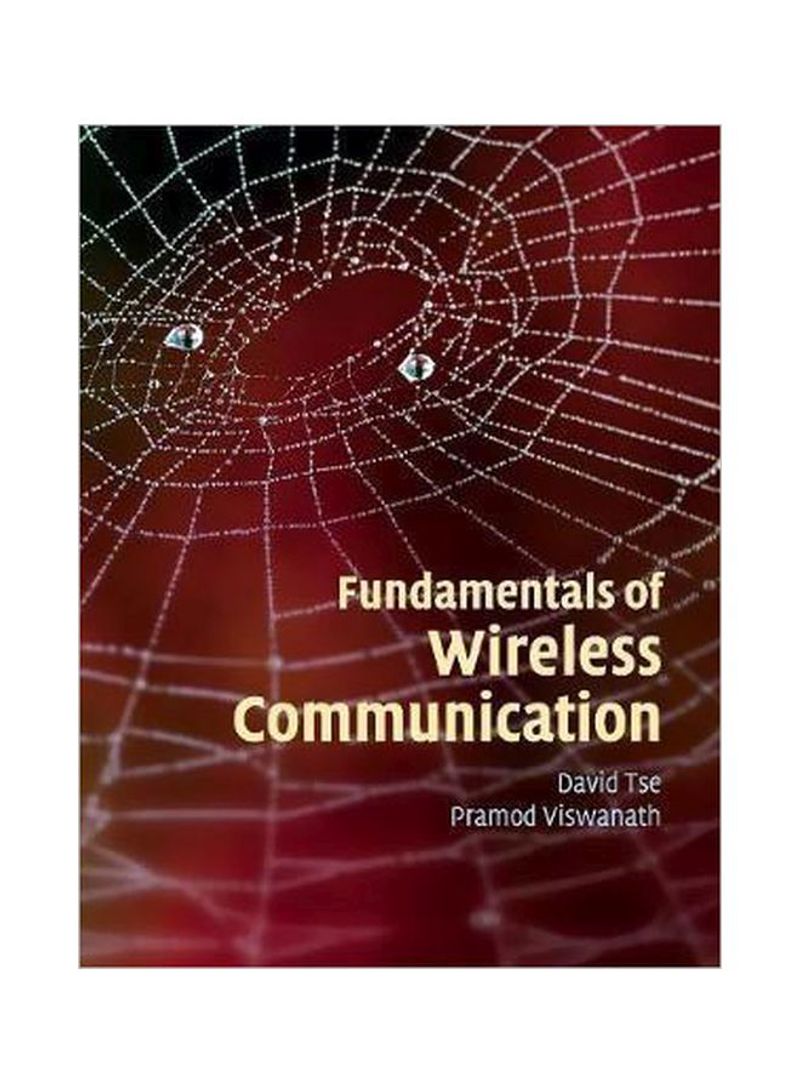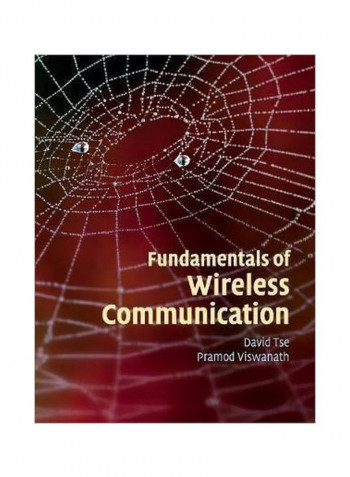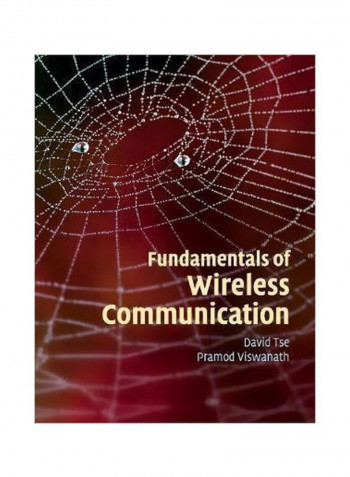Fundamentals Of Wireless Communication Hardcover
Recommend
Sort by
Rating
Date
Specifications
Author 1
David Tse
Book Description
The past decade has seen many advances in physical layer wireless communication theory and their implementation in wireless systems. This textbook takes a unified view of the fundamentals of wireless communication and explains the web of concepts underpinning these advances at a level accessible to an audience with a basic background in probability and digital communication. Topics covered include MIMO (multi-input, multi-output) communication, space-time coding, opportunistic communication, OFDM and CDMA. The concepts are illustrated using many examples from real wireless systems such as GSM, IS-95 (CDMA), IS-856 (1 x EV-DO), Flash OFDM and UWB (ultra-wideband). Particular emphasis is placed on the interplay between concepts and their implementation in real systems. An abundant supply of exercises and figures reinforce the material in the text. This book is intended for use on graduate courses in electrical and computer engineering and will also be of great interest to practising engineers.
Language
English
Publisher
Cambridge University Press
Publication Date
30 July 2005
Number of Pages
583
About the Author
DAVID TSE is a Professor at the Department of Electrical Engineering and Computer Science, University of California, Berkeley. PRAMOD VISWANATH is Assistant Professor at the Department of Electrical and Computer Engineering, University of Illinois at Urbana-Champaign.
Author 2
Pramod Viswanath
Editorial Review
Tse and Viswanath achieve remarkable clarity in combining sound theoretical development, simple insights, and current practice into an integrated whole. Fundamentals of Wireless Communication will quickly become a classic, serving both as a reference and a textbook built on firm principles.' Professor Robert G. Gallager, MIT '... a superb textbook covering the field of modern wireless communications. The book truly covers the fundamentals of a wireless system design and incorporates a lucid exposition of the most recent advances such as MIMO and opportunistic communication. The results are derived with exceeding clarity and often linked to an information theoretical framework, thus providing the reader with a clear understanding of optimal design choices for both point-to-point and multiple access wireless communication ...'. Dr Roberto Padovani, CTO, Qualcomm Incorporated, San Diego 'Fundamentals of Wireless Communication is a terrific introduction to principles of physical-layer design for state-of-the-art wireless systems. It is a wonderful and much-needed resource for new graduate students and practicing professionals alike. Tse and Viswanath have written a text of enduring value.' Professor Gregory W. Wornell, MIT 'Fundamentals of Wireless Communication is a unique combination of engineering insight, theoretical vision and systems experience. This is the text I use to explain to graduate students how they should think about fading channels.' Professor Robert Calderbank, Princeton University '... this is a book written by academics, primarily for graduate courses. The style fits that role perfectly. It is predominantly mathematical, often using the maths as part of its way to describe a concept. However, it is an improvement over many graduate texts. The style of writing is open and relaxed. There are many real world examples explaining how concepts are related in 2G and 3G systems. The use of illustrations is excellent and there are copious exercises at the end of each chapter ... I think that as a graduate text this would be truly excellent ...'. IEE Communications Engineer 'Tse's and Viswanath's book addresses the most current topics and presents results from recent years in radio communication theory. I strongly recommend this book for graduate students taking a course in wireless systems. The first four chapters can be recommended for use in an undergraduate course in wireless communications as well.' IEEE Communications Magazine 'This book is a highly readable and step-by-step introduction to wireless communications ... I will recommend it to my MSc students.' The Times Higher Education Supplement "Tse and Viswanath achieve remarkable clarity in combining sound theoretical development, simple insights, and current practice into an integrated whole. Fundamentals of Wireless Communication will quickly become a classic, serving both as a reference and a textbook built on firm principles." Professor Robert G. Gallager, MIT "Fundamentals of Wireless Communication is a terrific introduction to principles of physical-layer design for state-of-the-art wireless systems. It is a wonderful and much-needed resource for new graduate students and practicing professionals alike. Tse and Viswanath have written a text of enduring value." Professor Gregory W. Wornell, MIT "Fundamentals of Wireless Communication is a unique combination of engineering insight, theoretical vision and systems experience. This is the text I use to explain to graduate students how they should think about fading channels." Professor Robert Calderbank, Princeton University "David Tse and Pramod Viswanath have succeeded in developing a superb textbook covering the field of modern wireless communications. The book, Fundamentals of Wireless Communication, truly covers the fundamentals of a wireless system design and incorporates a lucid exposition of the most recent advances such as MIMO and opportunistic communication. The results are derived with exceeding clarity and often linked to an information theoretical framework, thus providing the reader with a clear understanding of optimal design choices for both point-to-point and multiple access wireless communication... this textbook will be extremely valuable not only to graduate students pursuing research in wireless systems but also to engineering professionals who have the task of designing and developing future wireless technologies." Dr. Roberto Padovani, Qualcomm Inc. "This is a book written by academics, primarily for graduate courses. The style fits that role perfectly. It is predominantly mathematical, often using the maths as part of the way to describe a concept. However, it is an improvement over many graduate texts. The style of writing is open and relaxed. There are many real world examples explaining how concepts are related in 2G and 3G systems. The use of illustrations is excellent and there are copious exercises at the end of each chapter...I think that as a graduate text this would be truly excellent." William Webb, IEE Communications Engineer "The book Fundamentals of Wireless Communication, written by David Tse and Pramod Viswanath, presents a very good summary of the concepts and techniques used for the physical layer of radio networks that have emerged mainly during the last 10 years. The first chapters introduce wireless fading channels, diversity, multiple access, and interference management. The second part of the book covers the topic of multiple antennas, especially MIMO systems, with the authors concentrating on spectral efficiency and bit error probability...I strongly recommend this book for graduate students taking a course in wireless systems. The first four chapters can be recommended for use in an undergraduate course in wireless communications as well." IEEE Communications Magazine



